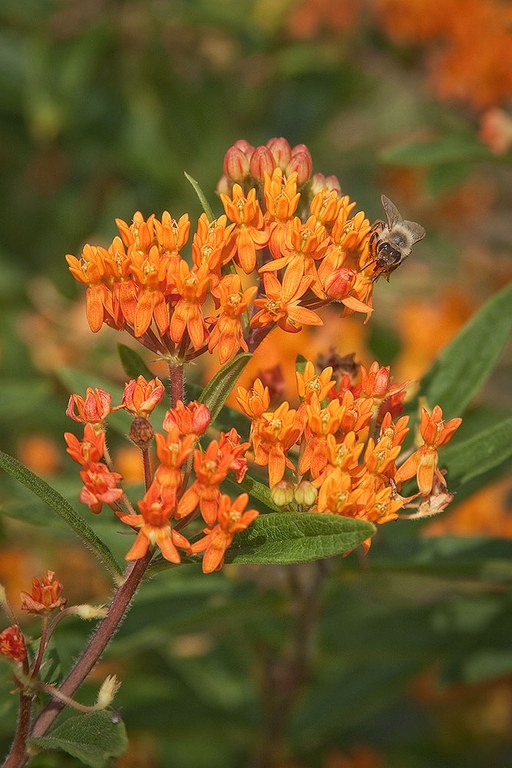Posted: January 24, 2020
The nursery industry sells over $4.3 billion worth of ornamental plants in the United States each year, representing a tremendous investment in the appearance of our managed landscapes. Current concerns about the health of pollinators generally, and honey bees in particular, raise the question – Are we helping honey bees with the flowering ornamental plants we choose? Beekeepers have honey bee hives in a range of suburban, urban, and rural environments, and honey bees in mostly managed landscapes could be using the flowering plants we choose as a source of food.
Scientists from the Center for Pollinator Research at Penn State University, in collaboration with others from the Connecticut Agricultural Experiment Station, York University in Toronto, Canada, and the University of Maine, recently addressed that question in a survey of pollen collected by honey bees in three commercial ornamental nurseries.
Pollen is the source of protein, fats and many minerals for honey bee colonies, with nectar serving the primary source of sugars for energy and honey production. The pollen was collected from the honey bee colonies at three commercial ornamental plant nurseries in Connecticut using a pollen trap, which removes the pollen from the pollen baskets on the legs of honey bee workers as they return to the hive. The plants from which the honey bees collected pollen were identified using two techniques: palynology, the identification of pollen grains using microscopic structures; and DNA metabarcoding, matching genes extracted from the pollen to DNA sequences for the same genes from plants.
Honey bees at the nurseries collected pollen from a very diverse mixture of plants, with 203 genera identified by either or both of the two methods. Five of the most commonly detected genera, Rosa, Hydrangea, Solidago (goldenrod), Spiraea, and Viburnum were grown in the nurseries, although they also include species that grow wild in the area. Other most commonly found genera were plants often considered to be weeds - Trifolium (clover), Plantago (plantain), and Ambrosia (ragweed) - or crop plants like Zea (corn). One unexpected genus was Nymphaea (water lily), which suggests that honey bees are looking at our pond plants for pollen more than we realized.
Dr. Kimberly Stoner, senior author of the study, said, "Perhaps the lesson to be learned is that honey bees have a much wider range of flowers they enjoy than we humans do! They can benefit from the flowering ornamentals we plant and from our weeds, too."
Another aspect of the study was to compare the two methods of pollen identification. Neither method was clearly superior - each found some plant genera that the other missed. DNA metabarcoding is still a new method of pollen identification, and further work is needed before it will be able to replace palynology.
This study was funded by the Connecticut Department of Energy and Environmental Protection, with additional funding from the Specialty Crops Research Initiative of the National Institute for Food and Agriculture.
Journal Reference: Sponsler, D.B., C. M. Grozinger, R. T. Richardson, A. Nurse, D. Brough, H. M. Patch, and K.A. Stoner. 2020. A screening-level assessment of the pollinator-attractiveness of ornamental nursery stock using a honey bee foraging assay. Scientific Reports.
This paper is freely available online at nature.com.


